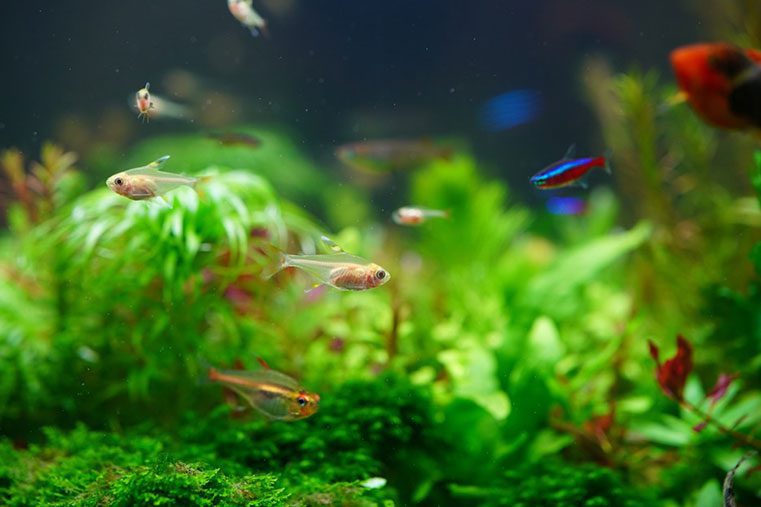Platy fish are one of the most common fish in freshwater aquariums. They are low-maintenance and beautiful fish that come in various colors. They are an excellent choice for first-time aquarium owners but are also a great addition for larger, freshwater tanks. It is important to know the specific needs of each fish species. Hopefully, this gives you good information to confidently care for platy fish in your home aquarium.
Platy Fish Care Species Summary
Platy fish are relatively small fish that originate from Central America and Mexico. They typically grow to be two to three inches long, depending on gender and species. There are numerous species of platy fish that come in a wide variety of colors and patterns. They are popular pets because of their active personality and beautiful appearance. They will usually live two to three years. To learn more about different breeds of platy fish, check out the Top 10 Most Popular Platy Fish Types.
Behavior
Platy fish are very mild-tempered; they are active and constantly moving. They are rarely aggressive and do well with other species of fish. Although they are not considered to be schooling fish, platy fish do better in groups. It’s been found that they tend to be more confident in groups of six or more.
Tankmates
Platy fish also tend to get along well with other breeds of fish. When selecting tank mates for platy fish, choose fish that are similar in size and have a similar, mild temperament, which includes other platy fish. However, owners should know that platy fish are very productive breeders. Be warned that if you have males and females in the same tank, they will most likely breed. For more ideas on what fish to put with your platy, check out this article to see the 20 Best Platy Fish Tank Mates.
Diet
Platy fish are omnivores and are not picky at all. In fact, they will most likely eat anything you feed them. However, it is recommended that you stick to a diet of commercial fish flakes or pellets. Mixing in a high-protein snack once a week or so is recommended to help keep them healthy. Foods like bloodworms, brine shrimp and tubifex are all good options.
Tank Requirements
As far as tank setup, for up to six platy fish, it is recommended to use a freshwater tank that is at least 10 gallons. After that, add two gallons per additional fish. Platy fish are small, but they like to have some room to swim around. They like the water temperature between 70 to 80 degrees Fahrenheit and they prefer the water to be more alkaline, so keep the pH levels between 6.8 and 8.0.
Many believe that platy fish don’t need filters because they are so hardy and tough; however, a filter is definitely recommended to keep the water clean and levels stable. But be sure to avoid filters that may cause strong currents. Platy fish are used to slow-moving currents. Sponge filters are often one of the best options for these types of fish.
Tank Decoration

Platy fish aren’t picky with the type of sand or rocks at the bottom of the tank. They don’t spend much of their time at the bottom, so any standard gravel will be great. Choose dark colors as those will best complement their vibrant colorways. Platy fish also like to have several plants with them in the tank. They love to play in the plants and use them for shelter. The ideal species of plants include hornwort, java moss and duckweed. However, make sure to leave plenty of open space in the tank for them to swim around. As much fun as it may be to fill tanks with cool decorations like shipwrecks and caves, avoid adding too many decorations. Adding a few rocks or other simple decorations is fine. Just remember to give them room to play.
For more information and ideas on tank setup, check out this link to see the best tank setup for platy fish.
Platy fish are such fun and beautiful, little fish. Whether you are looking to start your first tank or looking to add something new to an already existing tank, you cannot go wrong with platy fish. They are active and fun to watch. If you follow the recommendations discussed above, you will likely have very happy and healthy-finned friends.



